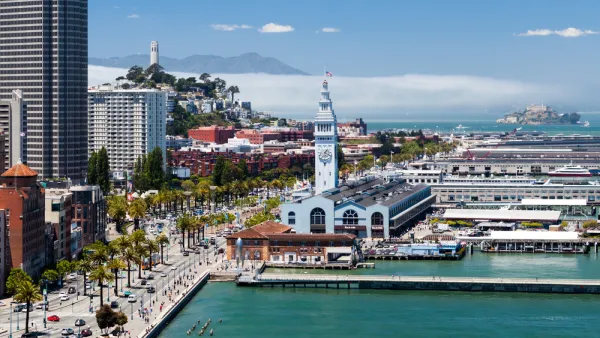Enough European cities have shown it can be done. It's time for U.S. cities to follow suit.

According to an article by James Nevius, cities in Europe are blazing a new trail of multi-modal planning, and it's time for the United States to get on board.
It can be easier to imagine European cities car-free because for so much of their histories—whether they are 300 or 3,000 years old—they were. Streets evolved as pedestrian thoroughfares, and cars still seem like interlopers. If you are a city with actual medieval walls, like York in the U.K.—a pioneer in pedestrianizing its old city—those walls can offer easy templates for vehicular “no-go” zones. This is true in large cities, too, such as London and Madrid. It’s no coincidence that the Madrid Central plan, which keeps older vehicles out of the center of Spain’s largest metropolis, covers the 1.8 square miles once surrounded by the ancient city walls or that London’s Ultra Low Emission Zone is rolling out in the densest and oldest part of that city.
Nevius argues that cities in the United States are capable of the same kinds of changes—because most cities in the United States are older than the automobile.
Nevius also lists the kinds of steps U.S. cities could take, "relatively quickly and inexpensively," to effect auto-independence:
- Make streets multimodal
- Implement congestion pricing and/or limited traffic zones
- Eliminate street parking
- Boost transit options
- Reclaim plazas and other public space for people
The article includes details on each of these policy proposals to help get U.S. cities headed in the car-free direction.
FULL STORY: How to end traffic

Analysis: Cybertruck Fatality Rate Far Exceeds That of Ford Pinto
The Tesla Cybertruck was recalled seven times last year.

National Parks Layoffs Will Cause Communities to Lose Billions
Thousands of essential park workers were laid off this week, just before the busy spring break season.

Retro-silient?: America’s First “Eco-burb,” The Woodlands Turns 50
A master-planned community north of Houston offers lessons on green infrastructure and resilient design, but falls short of its founder’s lofty affordability and walkability goals.

Test News Post 1
This is a summary

Analysis: Cybertruck Fatality Rate Far Exceeds That of Ford Pinto
The Tesla Cybertruck was recalled seven times last year.

Test News Headline 46
Test for the image on the front page.
Urban Design for Planners 1: Software Tools
This six-course series explores essential urban design concepts using open source software and equips planners with the tools they need to participate fully in the urban design process.
Planning for Universal Design
Learn the tools for implementing Universal Design in planning regulations.
EMC Planning Group, Inc.
Planetizen
Planetizen
Mpact (formerly Rail~Volution)
Great Falls Development Authority, Inc.
HUDs Office of Policy Development and Research
NYU Wagner Graduate School of Public Service




























